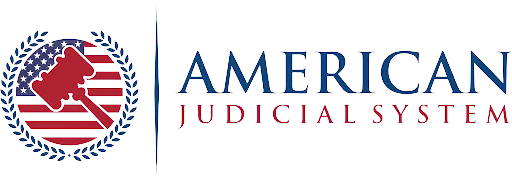Self-storage legal agreements outline the essential terms of storage with the relevant responsibilities and liabilities accrued by either a storage provider or tenancy. According to history, self-storage services have been booming for these two decades, with the tendency persisting to increase. Historically, self storage started off during the early development of civilizations when people had minor needs for any temporary space provided for goods and items. As development and years reaped benefits slowly, self-space rental became moderately complex, which saw the birth and need for clear, coherent, standardized documents. Nowadays, self-storage contracts are supposed to avoid disputes and ensure that the parties involved know their rights. They contain a myriad of very vital concerns regarding payment terms, security measures, insurance options, rules on access, and use. In a nutshell, a self-storage legal agreement protects the provider and customer by clearly outlining what each party is liable for, therefore minimizing friction and enabling seamless operations.
What is a Self-Storage Agreement?
A self-storage agreement is a legally binding contract between a storage provider and a customer. It outlines the terms and conditions under which the customer can use the storage unit, ensuring that both parties understand their rights and responsibilities. These agreements cover important details such as rental duration, payment terms, access hours, and security provisions. For example, NSA Storage ensures that their agreements clearly specify security measures in place to protect customer belongings, including surveillance and controlled access. This helps prevent disputes over responsibilities regarding the safety and care of the stored items. Additionally, the agreement usually includes clauses on how to handle late payments, damage to the unit, and procedures for terminating the contract. By providing these clear terms, both the provider and the customer can avoid misunderstandings and ensure a smooth storage experience.
Statistics: Over 70% of self-storage customers report that having a written agreement helps clarify expectations and prevent conflicts.
Key Provisions for Protection
Self-storage agreements are designed to protect both the provider and the customer by establishing clear expectations and outlining specific provisions. One key provision is the detailed description of the storage unit, including its size, access limitations, and any security measures in place. These provisions ensure that customers understand exactly what they are renting and what protections are offered.
In addition, a self-storage agreement would have provisions regarding conditions about the time of payment, penalty payments in case of delays, and the process for termination. The condition, on both ends, clearly explains what can be financially anticipated by both parties from one another. The next section sets an account for instances when damages or losses may be caused to an item or facility: This would involve setting an understanding where any incidences that render damages upon stored goods or either of the parties would thus become liable and hence compensate in full the required damages to restore whatever loss may be caused by an event that resulted from such instances. By outlining these provisions, self-storage agreements create a legal framework that limits potential disputes. These agreements also often include rules regarding the types of items that can be stored, preventing the storage of dangerous or prohibited materials. This clarity is crucial for maintaining a fair and functional relationship between the provider and the customer.
Historical Note:
The self-storage industry began in the 1960s, originally providing basic storage solutions. As demand grew, the need for more detailed agreements became evident, leading to the creation of comprehensive contracts.
Rights and Responsibilities
Self-storage agreements define the rights and responsibilities of both providers and customers, ensuring clear expectations and helping to prevent disputes. These agreements detail the customer’s right to access their belongings, along with the provider’s duty to maintain a safe and secure environment for storage. They also outline the customer’s responsibility to keep the unit in good condition and to follow the facility’s rules and regulations.
Here are some key rights and responsibilities:
- Customer’s right to access their unit during agreed hours.
- Provider’s responsibility to maintain security measures such as surveillance.
- Customer’s responsibility to keep the unit clean and avoid storing prohibited items.
By clarifying these rights and responsibilities, the agreement helps both parties understand their obligations and limits. This ensures smooth interactions and protects both the customer’s property and the storage provider’s premises.
Insurance and Liability Clauses
One of the most important aspects of a self-storage agreement is the inclusion of insurance and liability clauses. These clauses determine how risks such as theft, fire, or damage to stored items are handled. Most self-storage providers offer basic liability coverage, but this is typically limited and may not cover the full value of the stored items. As a result, many agreements give customers the option to purchase additional insurance for more comprehensive coverage. This ensures that customers are protected in case of unexpected events. The agreement also outlines the provider’s liability, stating the extent of their responsibility for any loss or damage to items stored in the facility.
Generally, self-storage providers are not responsible for any damages unless caused by their own negligence or failure to maintain the facility. Customers should carefully review these clauses to understand their level of protection and decide whether they need to purchase extra insurance. Understanding these terms is essential to making an informed decision about whether the provided coverage meets their needs or if additional protection is required.
Dispute Resolution Methods
Self-storage agreements typically include clauses that address how disputes between customers and providers will be handled. These methods are important for resolving issues efficiently and avoiding legal complications. Most agreements specify alternative dispute resolution processes, such as mediation or arbitration, before resorting to litigation.
Here are common dispute resolution methods:
- Mediation to reach a mutually agreed-upon solution.
- Arbitration as a binding decision made by a neutral third party.
- Negotiation between parties to settle differences without third-party involvement.
- Legal action if mediation or arbitration doesn’t resolve the dispute.
By outlining these procedures, both parties understand the steps they must take if a conflict arises. These methods help ensure that disputes are resolved fairly, without unnecessary delays or legal costs, providing both customers and providers with a clear path to resolution.
The Importance of Clear Agreements
Clear self-storage agreements are crucial for protecting both customers and providers. They ensure that both parties understand their rights, responsibilities, and obligations, helping to avoid conflicts and misunderstandings. A well-written agreement outlines important terms such as payment schedules, insurance coverage, access rights, and liability clauses. It also helps establish a process for resolving disputes, making it easier to handle issues when they arise. For customers, knowing the terms of their contract allows them to make informed decisions about what they are storing and how they are protected. For providers, these agreements provide a framework for maintaining security and managing the facility efficiently. Ultimately, clear agreements lead to smoother operations and better relationships between self-storage providers and their customers, helping both parties enjoy a more secure and organized experience.










